Jason Davis • Aug 15, 2019
OSIRIS-REx Team Picks 4 Candidate Sample Sites on Asteroid Bennu
The science team for NASA's OSIRIS-REx mission has compiled a list of 4 candidate sample sites on asteroid Bennu, one of which will be the touchdown spot for the spacecraft next year. It's an important milestone for OSIRIS-REx, which (like Japan's Hayabusa2 spacecraft at asteroid Ryugu) has had to adjust its plans after discovering a much rockier surface than anticipated. The OSIRIS-REx team will spend 4 months observing the 4 sites before picking a primary and backup sample site in December.

The 4 sites each have unique characteristics that would advance the field of asteroid science. Each was selected based on a stringent set of criteria: how safely a sample can be collected from the local topography; how likely it is that the site has rocks and regolith smaller than 2.5 centimeters in diameter that can be collected by TAGSAM; how easily the spacecraft can maneuver in and out of each site; and the potential science value of a sample from each location. The science team is hoping to collect things like hydrated minerals and carbon-rich materials that may help them figure out how asteroids relate to the formation of our solar system, and the origin of life on Earth.
Two of the sites are near Bennu's equator, and the other 2 are closer to the poles. The sites are named after birds native to Egypt, keeping in line with the name Bennu, a mythological Egyptian heron whose name was bestowed on OSIRIS-REx’s target asteroid following a 2013 contest sponsored by The Planetary Society, University of Arizona, and MIT. The OSIRIS-REx team and International Astronomical Union recently announced that Bennu features would be named for mythological birds and bird-like creatures.
Here's a look at each site. If you'd like to dig deeper, the OSIRIS-REx mission website has an excellent resource page that includes images from multiple perspectives, stereo pairs, anaglyphs, boulder counts, scale comparisons, and global maps.
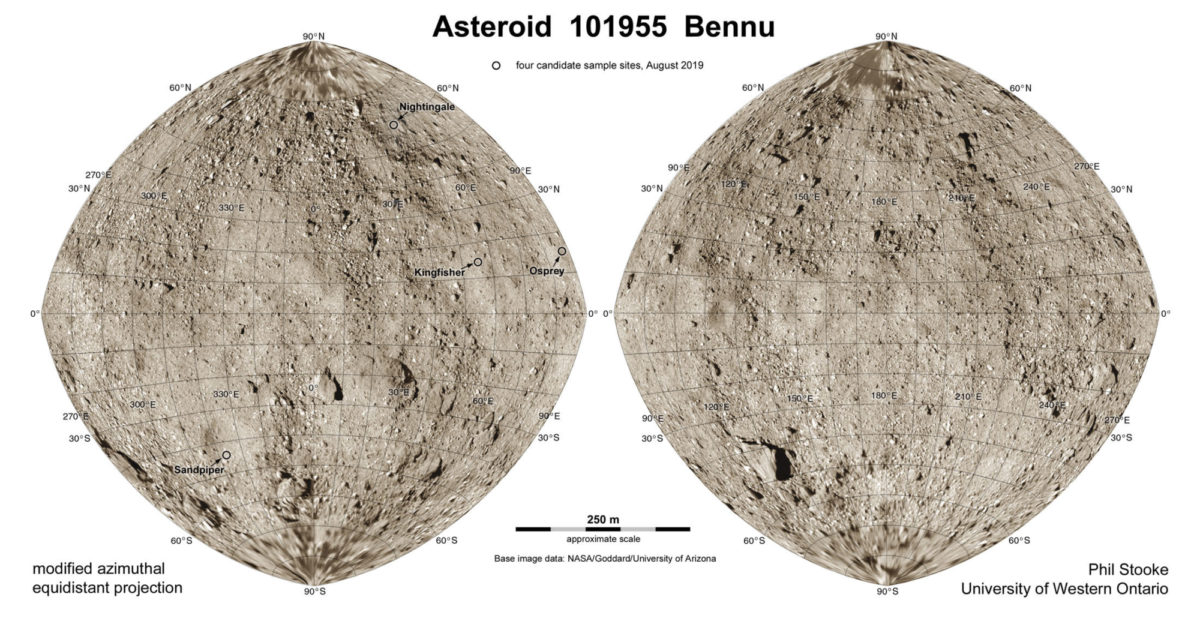
The Equatorial Sites
Kingfisher
Because Kingfisher is located on Bennu's equatorial bulge, it may contain material from both the northern and southern hemispheres. It's a small, relatively young crater, which means a sample there could contain material that hasn't been exposed to space weathering as long. Out of all 4 sites, Kingfisher has the strongest water signature. (There's also a Kingfisher local angle for the OSIRIS-REx team: It's the name of a fancy-ish seafood restaurant in Tucson near the University of Arizona.)
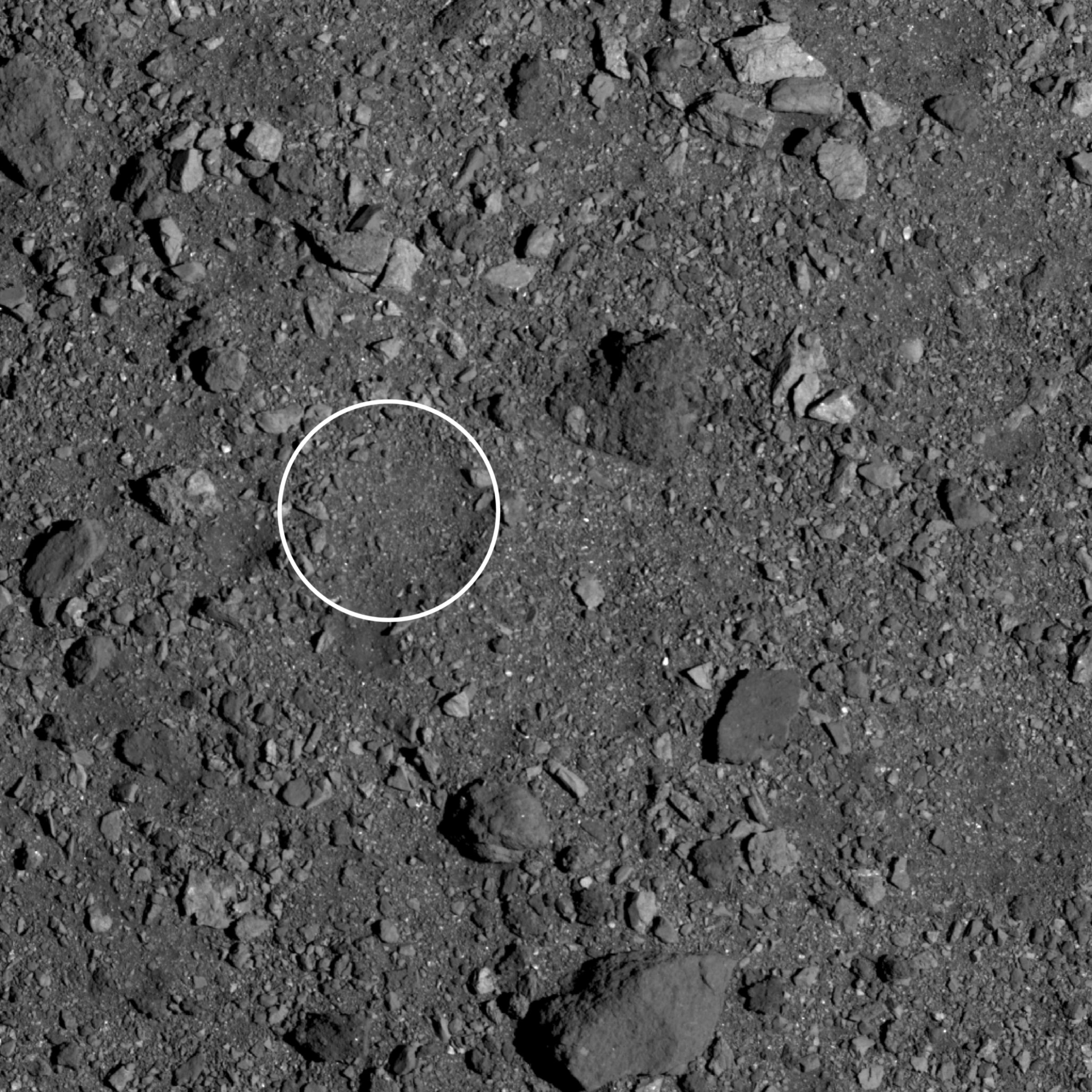
Osprey
Located about 32 degrees east of Kingfisher, Osprey is also on Bennu's equatorial bulge. Osprey out of all 4 sites has the strongest signature for carbon-rich materials. It has a variety of rock types, with wide albedo and color variations and a big dark patch of regolith that looks particularly interesting.
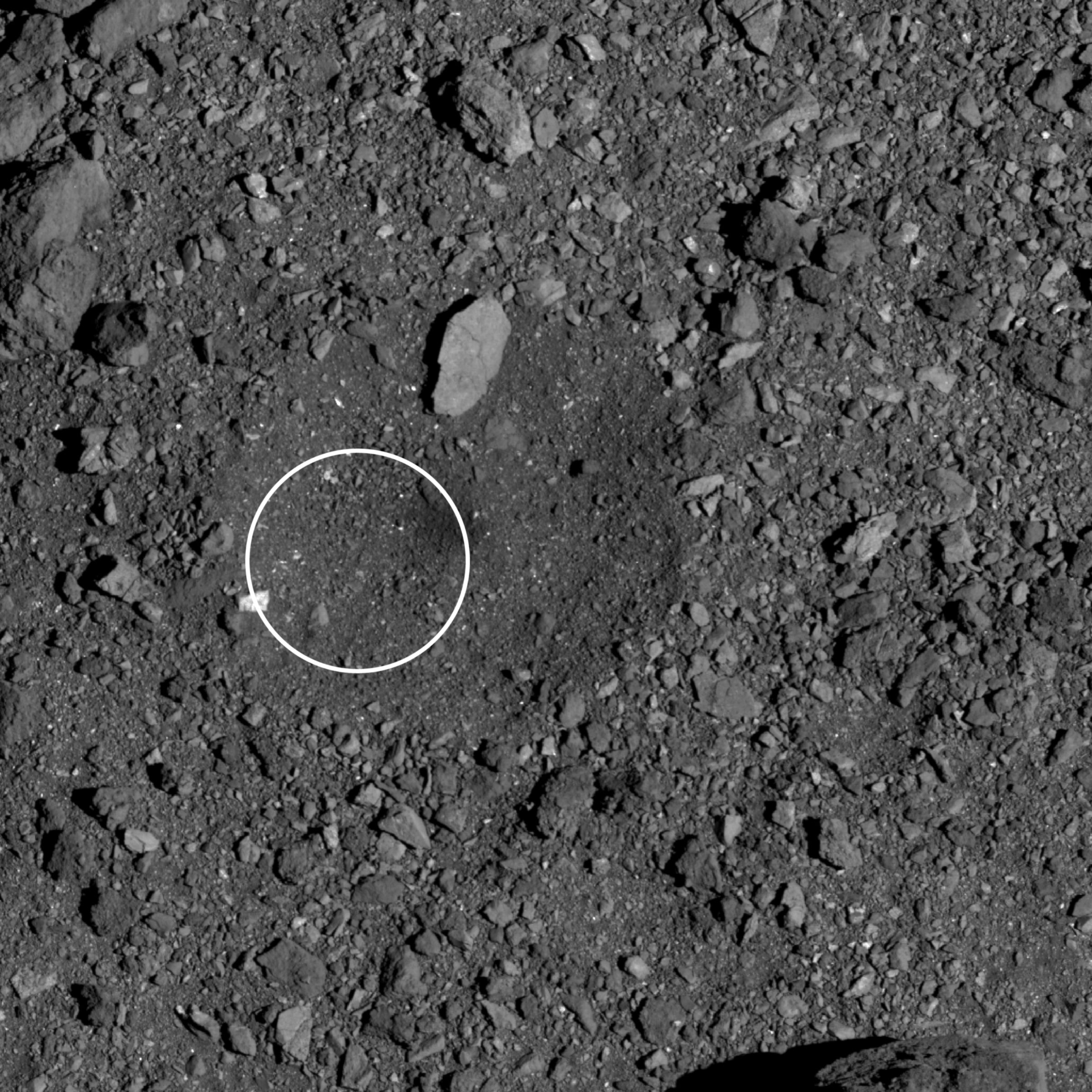
The Polar-ish Sites
Nightingale
Nightingale has a latitude of 56 degrees, making it more than halfway between Bennu’s equator and north pole. It has a lot of fine-grained material, which makes it a good place for sample collection. The regolith there has the highest color variation of all 4 sites, which indicates a wide variety of materials.
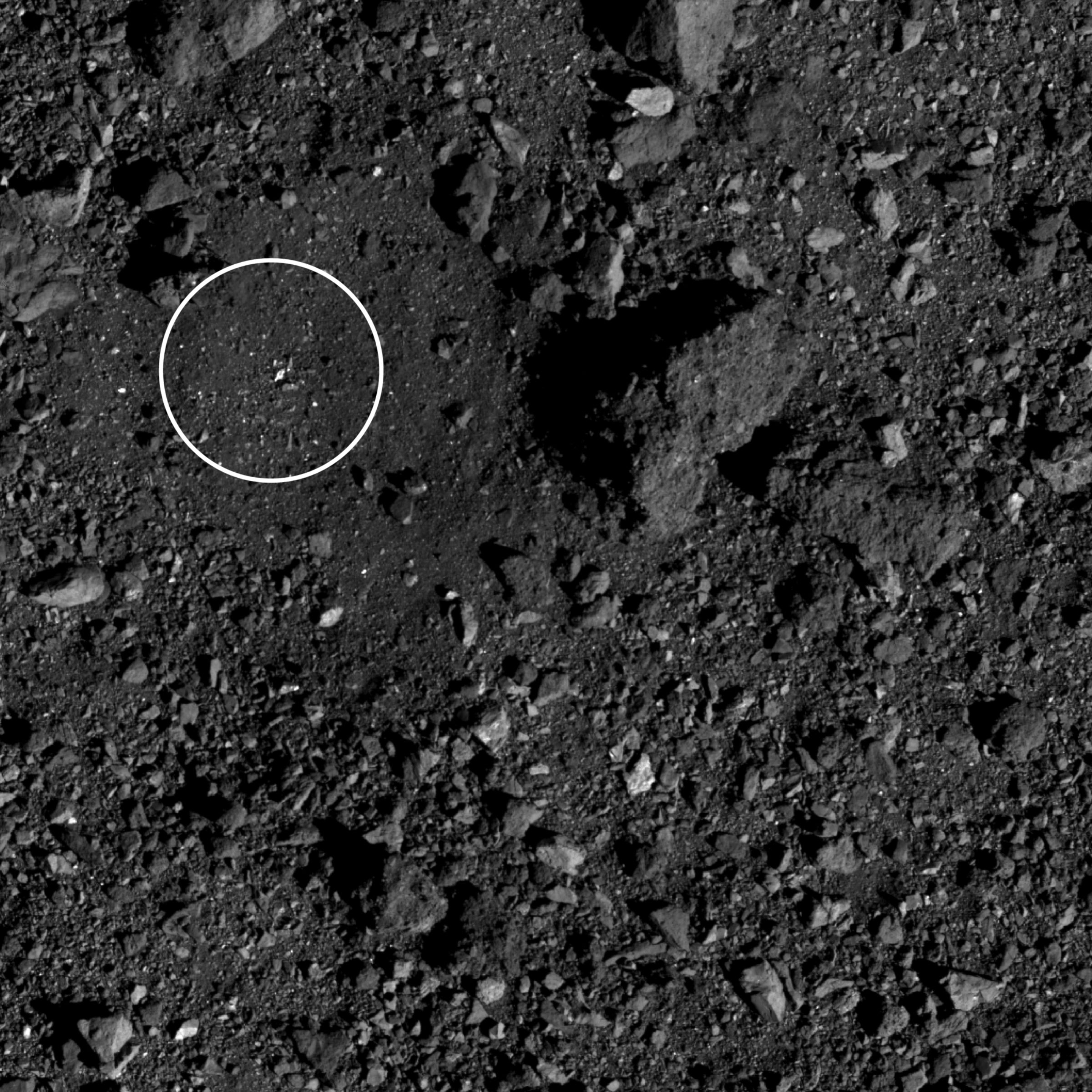
Sandpiper
At 47 degrees south, Sandpiper is the sample site from down under. There are steep slopes and boulders in the area, which could pose a challenge for the spacecraft. The payoff is that there are two young craters nearby that may have scattered fresh subsurface material into the sample spot. Sandpiper also has hydrated minerals. The materials there vary in brightness, indicating diverse sources.
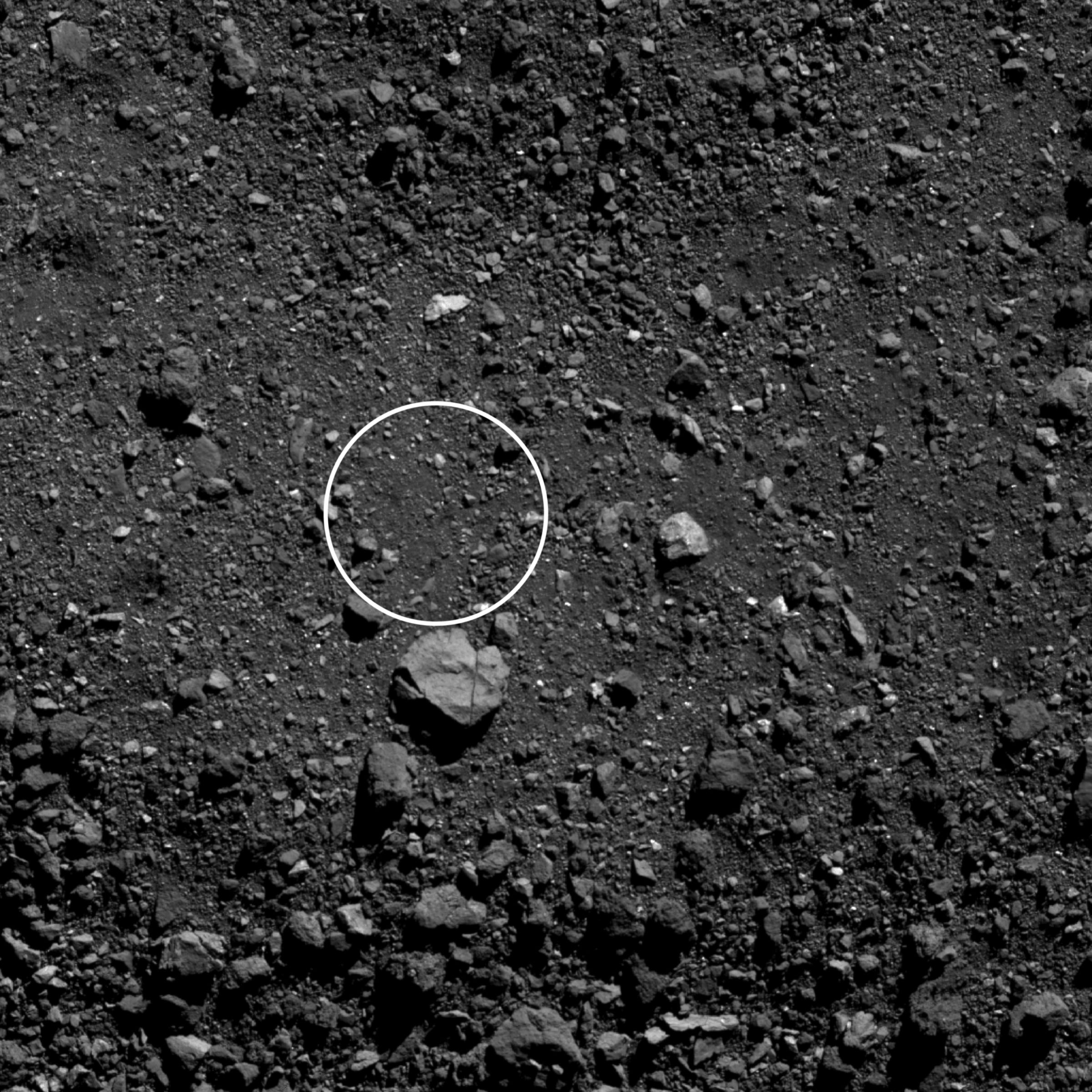
OSIRIS-REx is currently in its Orbital C phase, circling Bennu at an altitude of 1.7 kilometers. This fall, the spacecraft will start performing detailed reconnaissance of all 4 candidate sample sites from as close as 1.29 kilometers. A prime and backup sample site will be selected in December.
The team originally planned to have just 2 candidate sample sites by now, but Bennu's rocky terrain delayed those plans. Fortunately, the mission schedule has a lot of margin built in. The rocky terrain also changed the requirements for the sample collection sites; originally, the team was looking for hazard-free areas 50 meters wide. That requirement has now shrunk to between 5 and 10 meters. That has been made possible by sharp navigation work; OSIRIS-REx has proven that it can autonomously steer around Bennu quite well using its own imagery. The mission team has modified the spacecraft’s sampling technique to use imagery-based navigation all the way to the surface. They call this new technique "Bullseye TAG."
In early 2020, OSIRIS-REx will descend even lower for high-resolution views of its prime and backup sampling sites, scanning for landmarks to use for future navigation. Sample collection was nominally planned for 4 July 2020, but now NASA now says that it will occur in the second half of 2020. OSIRIS-REx isn't scheduled to depart Bennu until March 2021, with return to Earth set for September 2023.
Support our core enterprises
Your support powers our mission to explore worlds, find life, and defend Earth. You make all the difference when you make a gift. Give today!
Donate

 Explore Worlds
Explore Worlds Find Life
Find Life Defend Earth
Defend Earth

